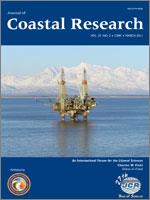The severe modification and progressive loss of coastal dunes in the last decades has resulted in calls from conservationists to assess the conservation status and condition of these systems, and thus several vunerability indices have been developed. The vulnerability status of two protected coastal dune systems in the central Gulf of Cádiz (SW Iberian Peninsula) was assessed at local scale and results compared with a previous assessment to regional scale. A vulnerability index (VI) based on variables that desribed geomorphological condition, marine influence, aeolian influence, vegetation condition, and human effects was calculated to previously defined 17 homogeneous coastal segments, and the main factors affecting them were identified. Higher vulnerability was related to two differentiated situations: segments with low or negative sedimentary budget and segments subjected to considerable human pressure. Vulnerability status of the studied stretches was also analyzed in relation to tourism pressure and level of accessibility. Vulnerability was directly related to some characteristics of the accesses as well as to visitor pressure, showing higher vulnerability those segments with increased accessibility and influx of visitors. Obtained results were more detailed in comparison with previous assessment to regional scale, and were easily translated to specific management actions. These actions should be mainly focused on controlling and limiting human (tourism) influence, particularly in those segments affected by these factors.
How to translate text using browser tools
1 March 2011
Dune Vulnerability in Relation to Tourism Pressure in Central Gulf of Cádiz (SW Spain), a Case study
Sara Muñoz Vallés,
Juan B. Gallego Fernández,
Claudia M. Dellafiore
ACCESS THE FULL ARTICLE

Journal of Coastal Research
Vol. 27 • No. 2
March 2011
Vol. 27 • No. 2
March 2011
Coastal dune management
dune vulnerability index
local-scale assessment




